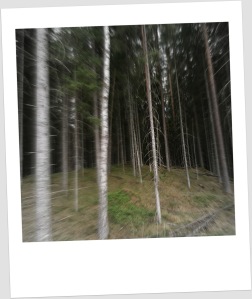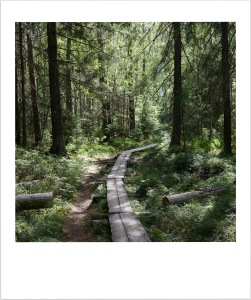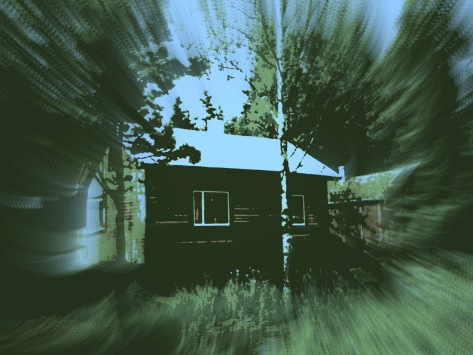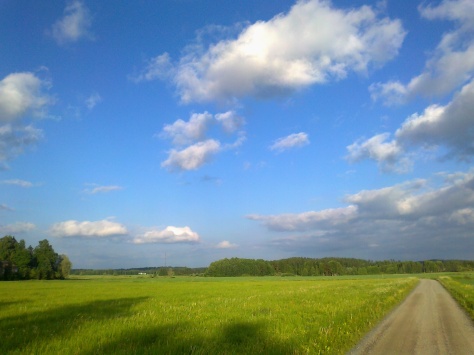An awfully small and uneventful adventure
(Originally from July 2018.)

Where did it come from, an almost childlike, if somewhat Gothic wonder suddenly taking over a worried middle-aged brain? I was walking through a forest feeling hot and sweaty, preoccupied, still performing an exercise rather than enjoying nature I’d sought out for its (relatively) untouched beauty. Steaming and swatting mosquitoes I trudged on, until after a couple of kilometres my mind jolted into a different gear.
It may have started with the wrong turning I took in a badly marked crossing. The well-trod path changing to rotten duckboards over wet terrain. Or it may have been the lonely orchid, a strange, faint beacon in the dark woods. I was fascinated, but it soon dawned on me that this couldn’t be the right way and turned back.
 Retracing my steps and finding sturdy new duckboards did not break the spell, however. The forest turned ever darker, lush undergrowth giving way to dull-coloured moss. Trees were closer together, branches withered and fallen off the lower half of lanky spruces. Heavy clouds rolled in, making everything a shade or two grimmer. Light rain began to fall.
Retracing my steps and finding sturdy new duckboards did not break the spell, however. The forest turned ever darker, lush undergrowth giving way to dull-coloured moss. Trees were closer together, branches withered and fallen off the lower half of lanky spruces. Heavy clouds rolled in, making everything a shade or two grimmer. Light rain began to fall.
It was an entirely different mood. There were more stones in this part of the woods, brooding under their moss cover. Everything was still and quiet, no birds or animals, even the mosquitoes had disappeared. There was a mitten stuck in a broken-off branch, speaking more of an absence than presence of humans. A tree root crawling over a stone looked like a claw. It was like stepping into a scene set for something I wasn’t supposed to see, just quietly waiting for me to pass. 
It was a little bit odd and gloomy but by no means threatening or scary, the only danger a falling tree, and the wind was not quite as stormy as to make it seem probable. I did not expect a monster to appear from behind the trees, but a metal band on a cover shoot would not have surprised me. 
I found it exhilarating, even the rain. Especially the rain. It was an unexpected mood, a slightly different landscape that drew my mind into here and now – or possibly somewhere else. My camera did not catch the gloom so well. The orchid and claw-like root, in all that they are inanimate objects, had somehow become blurry in my photographs, as if they weren’t quite there. (They were the only failed pictures of the day.)
Eventually the forest relaxed and opened up to let in more light, a glimpse of a lake, sounds of playing children and barking dogs. Duckboards ended as the ground became firmer again. Rainclouds withdrew, mosquitoes gathered for a feast. I picked another path away from the people and dogs, a soft, friendly trail through verdant, sun-speckled woods, striding over rock and root, now feeling oddly happy.

I found this post left hanging in drafts. Maybe I wasn’t happy with the result or meant to return to it for some other reason, but never did. I only corrected mistakes I certainly would have caught rereading the text back then, but leaving it otherwise as I found it. Didn’t dare fiddle with the odd layout and whatever the then-me did with the photos, either, lest this outdated template will explode.
I might not remember what happened with this text, but I’ve never forgotten that walk.
Was it worth posting? Too unremarkable? Or do you recognise the sudden heightened experience of place, taking a new meaning, ordinary turning extraordinary for a few moments?












